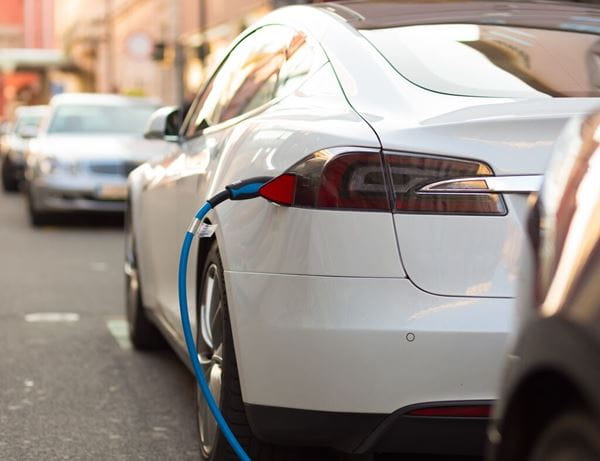
Autumn Statement: What fleets and drivers should be aware of.
The Government is presenting its latest Autumn Statement on Wednesday – the second of Rishi Sunak’s premiership and Jeremy Hunt’s chancellorship. By Matthew Walters, Head of Consultancy Services & Customer Value.
These statements are always meant to be stripped-back affairs; little more than quick updates on the state of the public finances, rather than ambitious programmes for political action. The big tax and spending decisions are generally reserved for the annual Budget statement, which usually happens in March.
That’s likely to be true for this Autumn Statement – not least because a general election is set to take place next year, so Sunak and Hunt may prefer to save their most attention-grabbing announcements for then.
But it’s also true that politicians often can’t resist making one or two oversized decisions in Autumn Statements. Consider last year’s, which contained quite a lot for fleets and drivers to chew on: the new rates of Company Car Tax (CCT) for 2025-26 and beyond; the revelation that, as of 2025, electric vehicles (EVs) would have to start paying Vehicle Excise Duty; and even the threat (later, thankfully, rescinded) that Fuel Duty could go up by a full 12 pence a litre!
So what can fleets and drivers expect from Wednesday’s Autumn Statement? Will this be another big moment for fleets and drivers? Or simply business as usual? Here’s our list of the five main things to watch out for:
1. The Office for Budget Responsibility’s forecasts
Alongside every Budget and Autumn Statement, the independent OBR publishes its official economic and fiscal forecasts. These are always worth paying attention to, not least because they’ll indicate both the strength of the UK’s economy and how much money the Chancellor has to play with – and therefore whether he has room for spending rises and tax cuts.
So far as we can tell right now, it’s likely to be a mixture of good and bad news. The growth forecasts for this year will probably show that the economy is shrinking overall, and the ones for subsequent years could be pretty week too. However, stronger-than-expected tax revenues and lower-than-expected Government debt repayments could give Hunt more headroom for giveaways than he may previously have thought.
2. Fuel Duty
Over the past decade or so, we’ve grown used to the Chancellor using the Autumn Statement to announce that – instead of rising in line with inflation – the main rate of Fuel Duty will be frozen at 57.95 pence a litre for the forthcoming fiscal year.
However, over the past couple of years, there have been two shocks to that familiar routine. The first was positive: in March 2022, back when he was Chancellor, Sunak announced an extra 5p temporary cut for a whole year, bringing that main rate down to 52.95p. The second was less positive: at last year’s Autumn Statement, it’s wasn’t confirmed that the main rate would be frozen, which, coupled with the potential reversal of the 5p temporary cut, raised the prospect that Fuel Duty could increase by a record-busting 12p a litre in March 2023.
Thankfully, that didn’t come to pass. The Government used this year’s Budget to finally freeze the main rate again – and extend the temporary cut.
But it raises the question of what will happen this time. Will the Government use some of its fiscal headroom to keep Fuel Duty at 52.95p a litre in 2024-25? Or will it dare, even in an election year, to raise that number higher?
3. A consultation on Road Pricing?
In fact, the Government could choose to do something even bigger on Fuel Duty – which is, start the process of getting rid of it altogether. After all, as more and more people move into EVs, the revenues raised from taxing petrol and diesel are going to decline. In theory, they could even drop to zero. Which means that the government needs to find an alternative way of raising £billions a year.
For some time now, it has been speculated that this alternative would be a form of Road Pricing – that is, charging motorists for using particular stretches of road, regardless of whether they’re in a traditional fossil-fuelled vehicle or a newer EV. Indeed, at the time of the last Autumn Statement, a former advisor to the Transport Secretary even tweeted that a full consultation and review into the feasibility of Road Pricing was set to be announced. And yet: that didn’t materialise then, and hasn’t materialised since.
Will it materialise on Wednesday? This would be a wholesale shake-up of the entire system of motoring taxation – so perhaps it’s too big for an Autumn Statement, or for a Government that might want to avoid taking risks ahead of an election. But some Government, at some point, is going to have to grapple with the crucial question of what comes after Fuel Duty.
4. EV charging investment
One major thing that’s happened between the last Budget and now is the Government’s announcement that it intends to push back the deadline for the end of new sales of fossil-fuelled cars and vans – from 2030 to 2035.
However, this doesn’t mean that the electric revolution is over. Far from it. 2035 is still not that far away, particularly for fleets with contracts lasting three, four or even five years. And, besides, there are many attractions to EVs right now. Lots of drivers, fleets and businesses are going electric today – knowing that they’ll have to in future, anyway.
This means that the UK needs a strong electric charging infrastructure. And while it’s true that the number of public charge points is growing at a decent rate (a further 14,255 have been installed so far this year, a 38% increase on the end of 2022), it’s also true that the rate of growth isn’t nearly fast enough. According to an analysis published by The Times newspaper earlier this year, the Government is set to miss its target of installing 300,000 new charge points by 2030… by 20 years.
All of which means that increased investment in the public charging infrastructure is a distinct possibility. Will it come on Wednesday?
5. Capital allowances
In this year’s Budget, the Government extended the thinking behind its previous “Super Deduction” such that, from April 2023 to 31 March 2026, companies will be able to claim 100% capital allowances on qualifying expenditure on new plant and machinery. This means that items such as forklifts, tools and computers, as well as vans, trucks and tractors, will be able to fully expensed against taxable profits for the next few years.
However, cars are exempt from this scheme. And so are vehicles that are bought with the intention that they will then be leased. This means that leasing companies cannot reduce their tax bills accordingly – and pass on the savings to their customers.
Thankfully, the British Vehicle Rental & Leasing Association (BVRLA) is already on the case. Immediately after the Budget, it announced that it is working with the Government to reach an accommodation. Specifically, the BVRLA’s Chief Executive, Gerry Keaney, said: “The Government has acknowledged how critical vehicle rental and leasing is in driving business investment in cleaner commercial vehicles and infrastructure. We look forward to working with them in the coming months to develop a powerful capital allowances regime that can drive even faster decarbonisation of road transport.” Again, this could be something that comes to fruition in the Autumn Statement.
Of course, we never truly know what’s in an Autumn Statement until that statement is delivered. Join us again on Wednesday, when we’ll analyse all of the Chancellor’s actual announcements for fleets and drivers.

.jpg?rev=3adbd558867c4d92bf9f22752f12a09c&mw=600)

